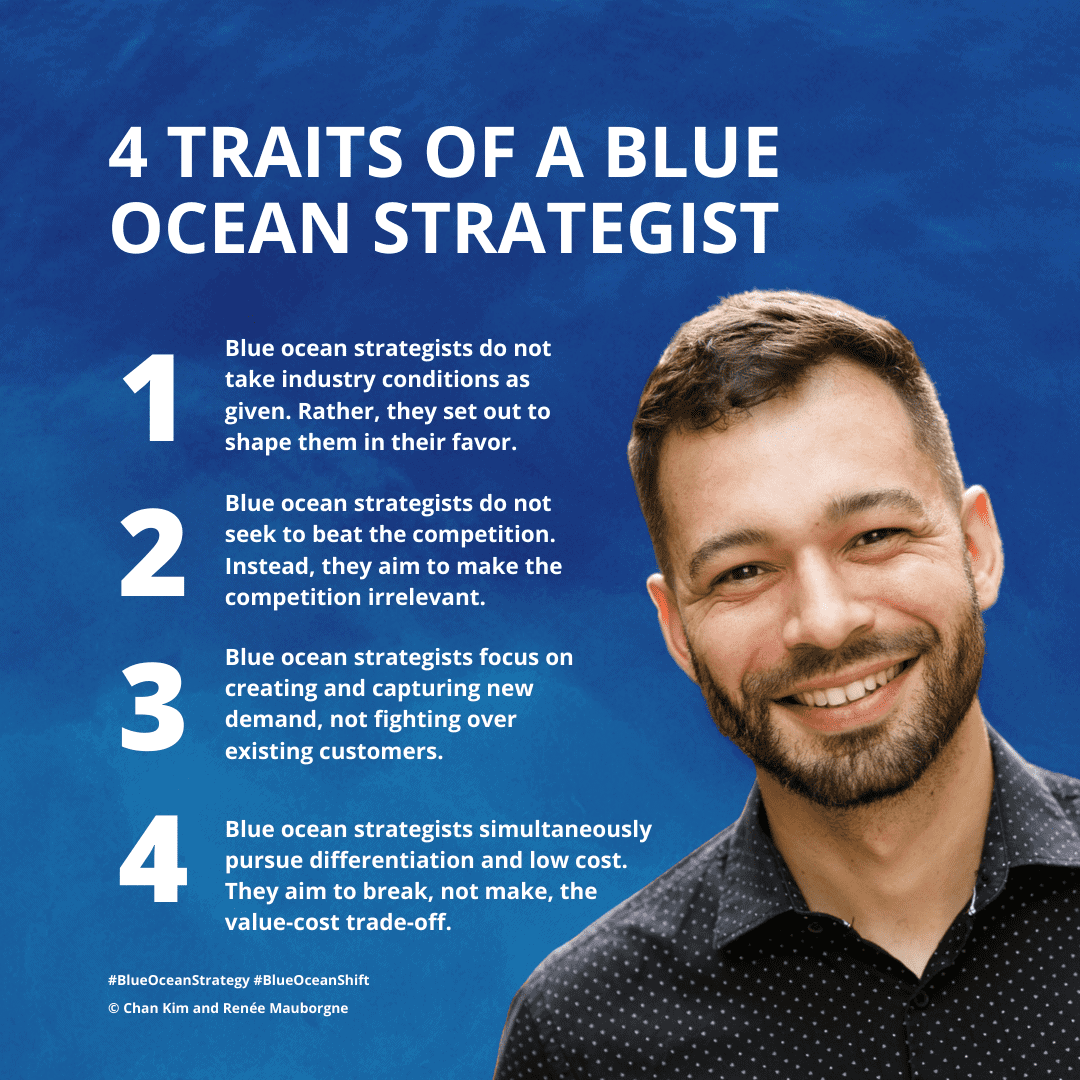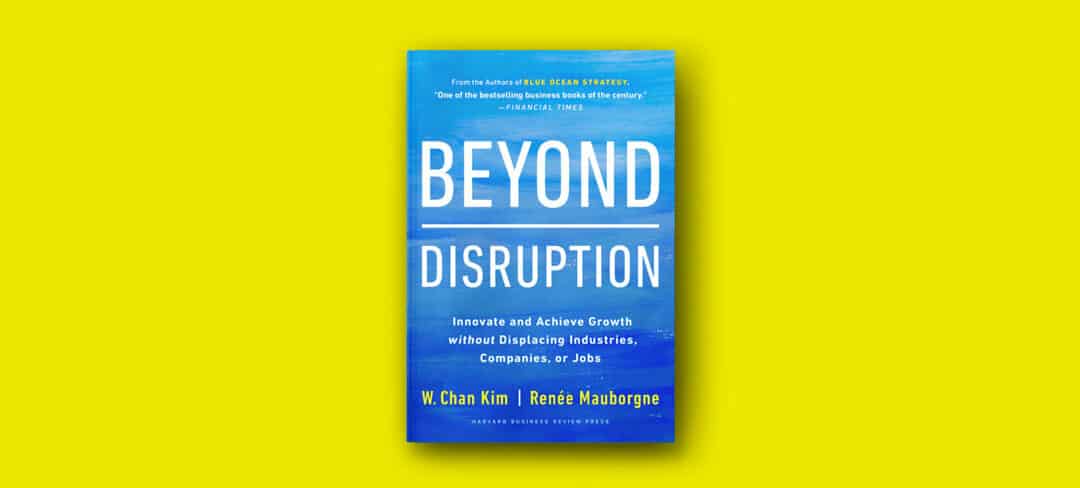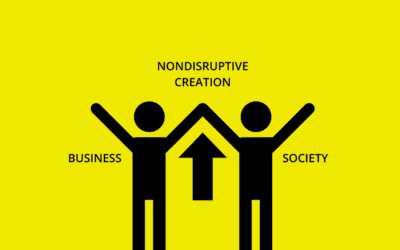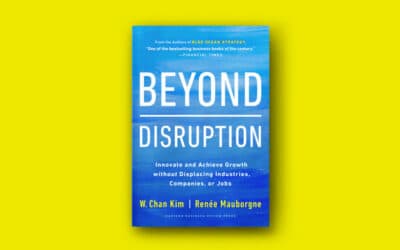How do blue ocean strategists see new opportunities where others see only red oceans of declining profits and slow growth? They don’t get taken in by what everyone else takes for granted. They embrace a perspective that helps them challenge long-held assumptions and recognize the artificial boundaries we unknowingly impose upon ourselves. Their perspective is different from the market-competing logic that dominates the way many business executives and entrepreneurs think.
To find out if you are a blue ocean strategist, ask yourself the following questions about your own perspective. Consider how each guiding principle can help you see opportunities where before only constraints were visible.
1. Do you take industry conditions as given? Or do you reshape them in your favor?
When executives develop strategy, they nearly always begin by analyzing the environment: Is the industry growing or shrinking? Is customer demand up or down? Most executives build their strategies based on such assessments. In other words, structure shapes strategy.
When faced with intense competition, declining demand and increasing costs, blue ocean strategists do not take industry practices as a given. What they recognize, and what most of us forget, is that while the industry conditions exist, individual firms created them. Industry boundaries are not fixed.
A blue ocean strategist doesn’t let the structure of the industry shape his or her strategy because, just as individual firms created existing industry conditions, individual firms can shape them too. From Apple in the consumer electronics industry to Cirque du Soleil in the circus industry, or even DryBar which created the “only-blowouts” marketspace in US hair salons, the examples are endless.
While shared industry logic may help you make sense of the world, it dramatically restricts your creative thinking and understanding of what is possible and profitable.
2. Do you try to beat the competition? Or do you make the competition irrelevant?
Most organizations are stuck in the trap of competing. Having accepted the industry structure as a given, executives benchmark their rivals and focus on outperforming them to achieve a competitive advantage. The irony is that focusing on building a competitive advantage leads to imitative, not innovative, approaches to the market.
Put more simply, the more you focus on benchmarking and outpacing the competition, the more your strategy will look like your competitors. Is this something your company does all too often?
But let’s take a step back. Every winning company, by definition, has a competitive advantage. So, a competitive advantage is a good thing. The problem is that when managers are urged to secure a competitive advantage, they automatically look to the competition. Rather than looking at what buyers value, managers end up defining the strategy based on the competition.
A blue ocean strategist, on the other hand, doesn’t focus on benchmarking or imitating competitors, or on trying to improve on their best practices. Instead, they focus on how to make the competition irrelevant.
Ask yourself– what would it take to win over the mass of buyers, even with no marketing? You want to create an offering so compelling that anyone who sees or tries it can’t help but rave about it. Stop looking at what industries are competing on and start looking at what the mass of buyers actually values.

3. Do you focus on creating and capturing new demand? Or do you focus on fighting over existing customers?
Customer satisfaction and understanding customer needs are a priority for any organization. Most organizations regularly monitor customer satisfaction scores through customer satisfaction surveys, for example. This can lead to finer segmentation and greater customization to meet your customers’ specialized needs.
A blue ocean strategist, however, doesn’t just focus on satisfying existing customers. Why? Because focusing on existing customers keeps a company anchored in the red ocean of existing market space. In most industries, organizations converge around a common definition of who their customers are. This prevents companies from seeing the wider potential of new demand outside their industry that they could tap into. In many industries, existing customers are just a drop in the bucket, compared with all the noncustomers who can be reached through market-creating strategies.
Instead of fighting to win a greater percentage of existing customers, blue ocean strategists recognize that extra demand is out there, waiting to be unlocked. By looking to noncustomers, they begin to uncover the pain points their industry imposes on buyers and why many refuse its offerings.
Ask yourself – do your existing customers keep you focused on what is, instead of what could be? Go further. Find out who your noncustomers are, and why they don’t buy into your industry.
4. Do you simultaneously pursue differentiation and low cost? Or do you make a value-cost trade-off?
A blue ocean strategist doesn’t choose between pursuing differentiation or low cost. If you truly have a blue ocean mindset, you do both.
A differentiation strategy often amounts to little more than adding bells and whistles to the industry’s current approach. On the other hand, pursuing a low-cost strategy often means cutting back the industry’s existing competing factors without creating anything new to stand apart.
To offer buyers a quantum leap in value and break the value-cost trade-off, blue ocean strategists focus as much on what to eliminate and reduce as they do on what to raise and create.
How about you? Do you act on the assumption that, to achieve differentiation, you need to spend more? Do you assume that lowering costs means compromising on the distinctive value you can offer?
Each of these guidelines to reframe your thinking is further detailed in Blue Ocean Shift. We hope you feel encouraged to start shifting your perspective and seeing brand new opportunities where you thought there were none.

















